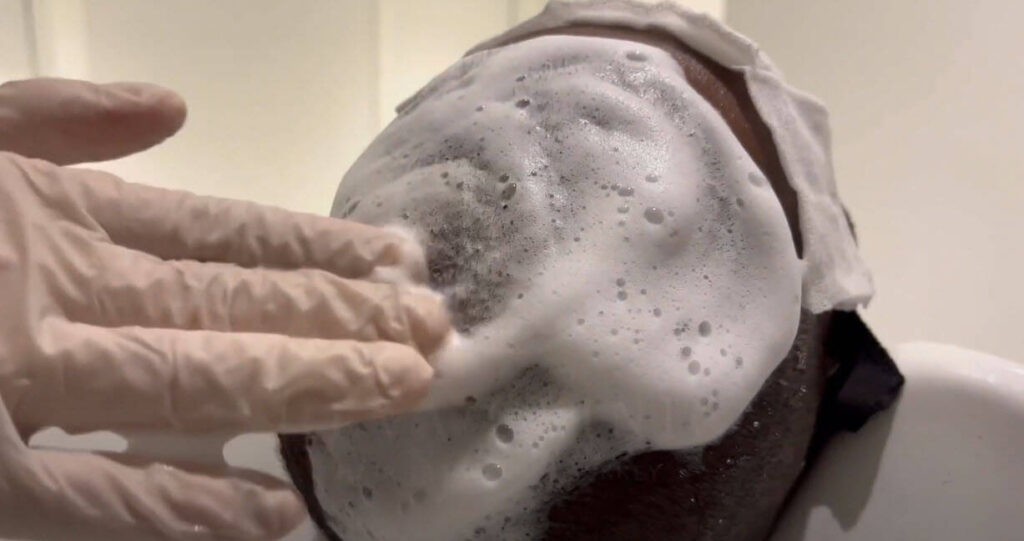Safe scab removal after a hair transplant
1- Apply panthenol foam to your scalp and wait for half an hour
2- Rinse it off
3- Apply a special shampoo
4- Massage your scalp with gauze in a circular motion
5- Finishing off by rinsing with water
Hair transplantation is a fascinating procedure, and it’s normal to desire to expedite the recovery process. As a result, many patients naturally wish to be informed about how to deal with hair transplant scabs following their procedure. Gathering detailed information about how to care for your scalp following a hair transplant will indeed help a quick recovery and natural-looking results.
Scab development is a natural part of the body’s function. It serves as a natural barrier to protect the skin from exposed sores. Especially after a hair restoration procedure that involves several tiny incisions. These factors promote bleeding, which contributes to the production of crusts. Scabs that form after a hair transplant is normal, and they will disappear after a proper wash.
When can I remove scabs after a hair transplant?
The scabs may be itchy, like with any healing lesion, but it’s crucial not to pick them. During these critical initial few days, the newly implanted grafts are extremely fragile, and any touch might dislodge or harm them. This might leave empty patches on the scalp, jeopardising the procedure’s success.
First four days
You should not touch your recipient area. For your scabs to heal as fast as possible, it’s preferable if you don’t smoke or consume alcohol for at least three days after the procedure. Also, sitting or standing for an extended period is not recommended.
By the end of the first week
Your grafts should be stable, and you may normally bathe and moisturise your hair to help the scabs and crusts release. The scalp should be clear of scabs after two weeks. Scabs are only a temporary condition and a normal component of the healing process after a hair transplant.
After ten days
You can give your scalp a little massage. The follicles should be securely linked to your scalp and receive enough blood flow. You don’t need to do anything to get rid of the scabs; they’ll come off on their own after they’ve dried. It’s important to remember not to pick at your scabs when massaging. Even though the grafts are settled, picking at the scabs may dislodge them and extent the healing process.
How to get rid of scabs after hair transplant?
While cleaning and bathing their hair, it is suggested that patients softly massage their scalp with their fingertips. The scabs will soften and come off spontaneously as a result of this. Picking your scabs, as tempting as it may be, might cause the newly implanted grafts to come loose. Most patients remain scab-free in about ten days following surgery if they follow the proper regimen.
Scabs arise after a hair transplant due to the nature of the procedure. Follicular Unit Extraction (FUE) and Direct Hair Implantation (DHI) are the two major procedures of hair transplantation. These treatments entail transplanting healthy hair follicles from a donor location of the patient’s scalp to places where hair loss has occurred, called the recipient area.
Experienced surgeons use specialised blades depending on the patient’s skin condition and the number of the grafts needed for the operation. The quantity and pattern of new hair growth are determined at this stage. Within the first day following surgery, scabbing will commonly form in the recipient area. You may also notice some redness and swelling in your scalp, though this should be minor and go away within a few days.





